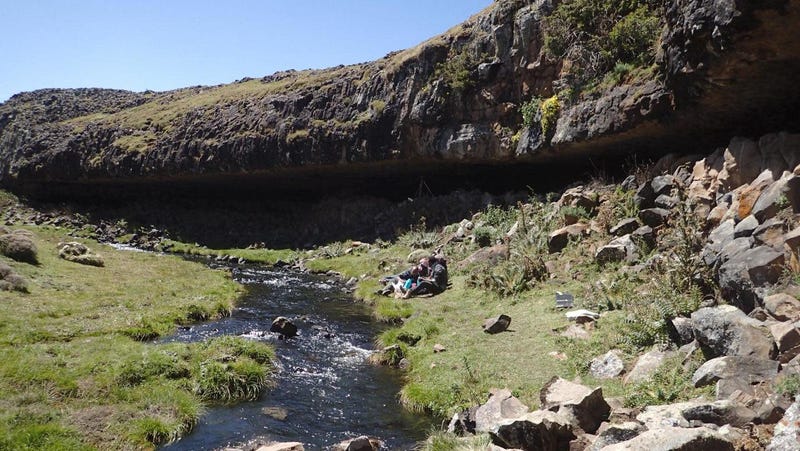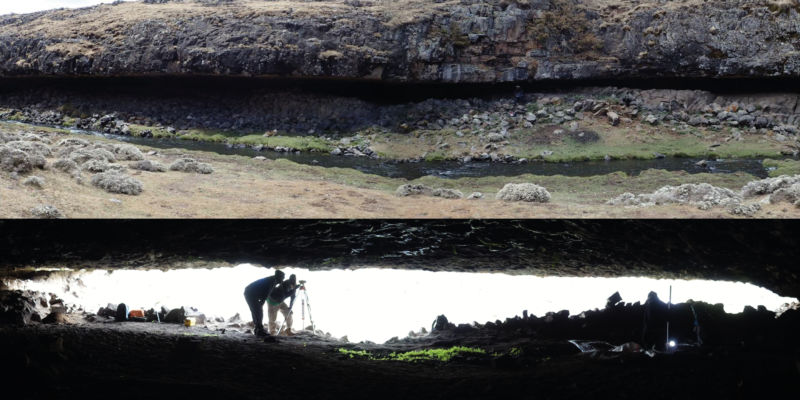Advancing the Archaeological Record
"The most exciting finding is the fact that prehistoric people repeatedly, over millennia, spent considerable amounts of time in high altitudes at a residential site and actively, deliberately made use of the available Afro-alpine resources."
"Prehistoric humans at that time were mobile hunter-gatherers, so they never stayed sedentary at a single site, but had a scheduled 'subsistence circuit.'"
"Hunting giant mole-rats is a clever solution, because their meat is highly nutritious, hunting them is physically not demanding, they are abundantly available, they live in a restricted habitat, and they are year-round available."
Götz Ossendorf, archaeologist, University of Cologne, Germany
"At that time, a large part of the Bale Mountains — about 265 square kilometers [100 square miles] was covered by ice."
"Glaciers were flowing from a central ice cap down into the valleys."
"A high mountain area during a glacial period — normally, people escape such conditions. People normally move downward during cold phases."
Alexander Groos, glaciologist, University of Bern, Switzerland, study co-author
 |
Paleoanthropologists have tended to focus attention on the Rift Valley and similar sites located at low elevations. "We were simply the first to go higher", explained archeologist Dr. Ossendorf, lead author of the newly published study. Humans, it has now been established with confidence, established themselves at high altitudes as hunter-gatherers making use of roasted giant mole-rats and glacier-fed streams, producing tools from obsidian.
The rock shelter that the research team investigated appeared to have been occupied for periods of time at least 16,000 years. Extreme altitudes are known to pose existential challenges -- with brutal weather conditions, while extreme altitudes are too harsh to support much vegetation let alone grasslands, and low oxygen levels can be life-threatening. "Our hominid ancestors were born lowlanders", explained Mark Aldenderfer, archaeologist from the University of California, not involved in the study.
While at the present time in Ethiopia, the Andes and Tibet, humans live at high elevations year-round, archaeologists had always assumed these to be places that were presumably the last choice for human settlement. Recent expeditions to mountains and plateaus have been revealing evidence of human occupation, however, dating back tens of thousands of years.
Dr. Ossendorf and colleagues initiated a project in 2015 in the Bale Mountains of southern Ethiopia, travelling over 1,100 kilometres by foot and using pack horses in a search for signs of early human occupation. Overhanging cliffs were searched to determine whether they had ever been used as shelters. Some 331 rock shelters were discovered to have signs of human occupation, but all had been used in recent centuries by livestock herders, complicating site examination for more ancient human remains.
The researchers did discover that because of a low ceiling, one rock shelter had been undisturbed and when the scientists excavated the floor they discovered the presence of hearths, animal bones and tools representing ample evidence that the rock shelter had once been used for human habitation. The site was called Fincha Habera, where carbon from charcoal remaining in the hearths was analyzed to establish the site age, to validate a range from 31,000 to 47,000 years.
From the evidence it was clear that giant mole-rats represented the bulk of the diet available to these cave dwellers in place of plentiful game available in the lowlands. The obsidian tools originated in the highlands where they were produced, a conclusion made obvious by the researchers tracing the presence of an obsidian outcrop at an elevation of over 4,100 metres -- not far from the Fincha Habera rock shelter.
 |
| Views of Fincha Habera from outside and from inside. Image: Götz Ossendorf |
Labels: Ancient Habitation, Ethiopia, High Elevation, Research

0 Comments:
Post a Comment
<< Home